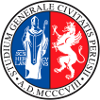Study-unit LABORATORY INFORMATICS
| Course name | Biological sciences |
|---|---|
| Study-unit Code | GP004022 |
| Curriculum | Comune a tutti i curricula |
| Lecturer | Valentina Poggioni |
| Lecturers |
|
| Hours |
|
| CFU | 3 |
| Course Regulation | Coorte 2021 |
| Supplied | 2021/22 |
| Supplied other course regulation | |
| Learning activities | Altro |
| Area | Abilità informatiche e telematiche |
| Sector | INF/01 |
| Type of study-unit | Obbligatorio (Required) |
| Type of learning activities | Attività formativa monodisciplinare |
| Language of instruction | Italian |
| Contents | Computer architecture. Microprocessor and main memory. Secondary memories. Input/Output devices. Operative system. Word Processor. Spreadsheets The World Wide Web. Internet and computer networks. |
| Reference texts | Handouts provided by the teacher. |
| Educational objectives | At the end of the course the students will know the fundamentals of informatics on compuetr architecture, memories, input/output devices. The students will be able to use the fundamental operations of a comnputer, will be able to create and delete folders, browsing the file system, manage the connected devises. He/She will be able to use the main functions of worprocessing, like for example create and update a document using base formatting functions that also includes images and tables. He/She will be able to use the main functions of spreadsheets, like for example import and organize data, create charts and plots, create simple functions and use statistical functions. He/She will be able to use the main functions of softwares that can be used to prepare a presentation with simple formatting and graphical effects. |
| Prerequisites | None |
| Teaching methods | In-class lessons and hands-on lessons in computer lab. |
| Other information | E-learning platform unistudium.unipg.it |
| Learning verification modality | E-learning platform unistudium.unipg.it |
| Extended program | Base concepts of computers and softwares: Hardware architecture. CPU, RAM, kind of memories, Input/Output devices. Software: system software and application software. Operative system: general concepts and main operations of Windows SO, task, virtual memory, concepts of algorithm and program. Word Processor: general concepts and characteristics; properties of characters, paragraph, sections (styles, alignments, heading and footnote, notes, summary, images, tables, symbols etc.). Spreadsheet: cells (strings, constants, formulas), absolute/relative references, refernces to a rectangular area, functions, standard formats (char type, height, etc.) and special formats (numnbers, currency, dates). Graphics and plots: type of cahrts (histogram, bars, pies, etc.); data series: single and multiple; labels, titles, formatting. How to create a presentation. Elements of net communications: computers net, net classification, communication modes, devises Internet: functioning principles and services: TCP/IP, IP address and DNS, Email, FTP. The World Wide Web: Client and server Web, browsers and their main functions, URL, Information search: search engines and boolean functions like "and", "or", "not". |


